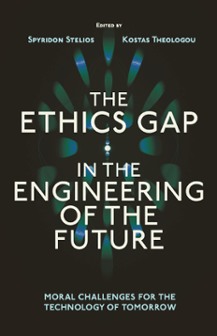
Index
The Ethics Gap in the Engineering of the Future
ISBN: 978-1-83797-636-2, eISBN: 978-1-83797-635-5
Publication date: 25 November 2024
Citation
(2024), "Index", Stelios, S. and Theologou, K. (Ed.) The Ethics Gap in the Engineering of the Future, Emerald Publishing Limited, Leeds, pp. 229-237. https://doi.org/10.1108/978-1-83797-635-520241013
Publisher
:Emerald Publishing Limited
Copyright © 2025 Spyridon Stelios and Kostas Theologou. Published under exclusive licence by Emerald Publishing Limited
INDEX
- Prelims
- Prolegomena: Mind the Gap! Now and for Ever
- Section 1 Artificial Intelligence
- Chapter 1 Who Should Obey Asimov's Laws of Robotics? A Question of Responsibility
- Chapter 2 Criminal Justice in the Age of AI: Addressing Bias in Predictive Algorithms Used by Courts
- Chapter 3 Ethical Challenges in the New Era of Intelligent Manufacturing Systems
- Chapter 4 From Croesus to Computers: Logic of Perverse Instantiation
- Chapter 5 The Gradual Unavoidable Colonization of the Lifeworld by Technology
- Section 2 Biotechnology
- Chapter 6 Ethical Aspects of Promises and Perils of Synthetic Biology
- Chapter 7 Adapting (Bio)ethics to Technology and Vice Versa: When to Fight and When to Collaborate With Artificial Intelligence
- Section 3 Space
- Chapter 8 Are Space Technologies Untimely?
- Chapter 9 Moral Vistas to Xenic Beyonds: Fostering Moral Imagination to Pre-empt Monsterization in Future Encounters With Extraterrestrial Life
- Chapter 10 Planning for the Future in Space – With or Without Radical Biomedical Human Enhancement?
- Chapter 11 Building Better (Space) Babies: Bioastronautics, Bioethics, and Off-World Ectogenesis
- Index